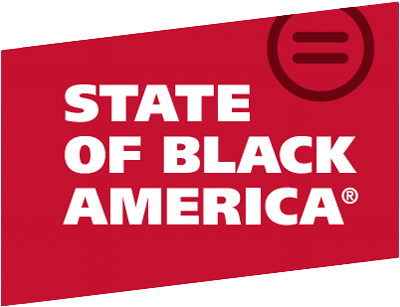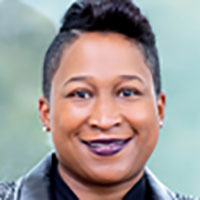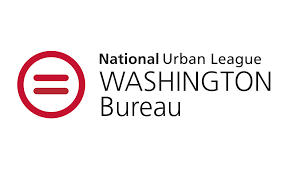Since their establishment 182 years ago, historically Black colleges and universities (HBCUs) have provided African American students with the best avenue, and, for some, the only path to a college degree. Despite this, arguments for and against the existence of HBCUs have been debated since the 1954 Brown v. Board of Education decision and the passage of the Civil Rights Act of 1964. Today, in defiance of political tactics in various states to close and merge HBCUs and despite the confluence of lower average admission requirements (including GPA and standardized test scores); less funding for institutional scholarships; limited technological resources and smaller operating budgets, HBCUs continue to persevere and provide higher educational opportunities for African Americans and students of all races.[1]
Higher education universally provides wide-ranging benefits to students, including higher average lifetime wages, better career opportunities, increased job security and satisfaction, and better health. It has a considerable economic impact on the U.S. economy. According to the U.S. Department of Labor, the higher education sector employs more than 4 million people and added more than $600 billion to the U.S. GDP during the 2017-18 school year. Though HBCUs only account for 3% of public and not-for-profit private institutions receiving federal student aid, these institutions enrolled 10% of all African American college students, accounted for 17% of bachelor’s degrees earned by African Americans in STEM fields, and annually generate $14.8 billion in economic impact.[2]
Given the importance of HBCUs to African American communities—and our nation, I believe all appropriate efforts should be made to ensure the reopening of HBCU campuses for the fall 2020 semester, taking into serious consideration CDC safety measures and government mandates to ensure the health and safety of students, faculty, and staff during the COVID-19 pandemic.
The first U.S. case of the novel coronavirus was reported on January 20, 2020. On March 6, the University of Washington became the first major university to cancel in-person classes and exams.[3] In the following days and weeks, universities across the country began closing their campuses and, where possible, sending students home as the number of COVID-19 cases ballooned.
The pandemic created a crisis for all colleges and universities, but especially for HBCUs.
Already financially strapped colleges and universities, particularly those with smaller endowments, experienced mounting revenue losses for a number of reasons: providing pro-rated refunds to students for room and board, dining, and other on-campus services; lost tuition dollars from declines in planned summer school enrollment; plunging athletic revenues from cancelled sporting events; and reductions in clinical income from university-affiliated hospitals. At the same time, these institutions incurred substantial, unforeseen expenses related to technology for online learning; providing laptops and mobile hotspots to students who lack reliable internet service at home; cleaning operations for dormitories, classroom buildings, and offices in preparation for a potential return of students in the fall; and providing emergency relief funds to students in need. Many colleges and universities were forced to institute hiring and salary freezes, furlough faculty and staff, and suspend non-essential travel to contend with increased costs and revenue losses.
On March 27, 2020, President Trump signed the CARES Act into law, providing nearly $2 trillion in relief funds in response to the COVID-19 pandemic, with $30.75 billion allocated for grants to provide emergency support to local school systems and higher education institutions. Of that, higher education institutions received $14.3 billion, 10% of which would be divided between HBCUs and grants for small institutions. But the financial costs of the COVID-19 pandemic, particularly at HBCUS, already exceeded the CARES Act’s outlay.
The financial impact of COVID-19 is exacerbated at HBCUs due to lower average enrollments, lower average core revenues, and a higher percentage of Pell eligible students. During the fall 2018 semester, the average full-time enrollment at HBCUs was 2,584 versus 4,591 at predominantly white institutions (PWIs). In addition to higher total and average head counts, PWIs also had significantly higher average core revenues, $346 million compared to $112 million for HBCUs. At HBCUs, tuition and fees, local appropriations, and private gifts as a percentage of core revenues were all lower than at PWIs, while government grants and contracts as a percentage of core revenues were higher.
Considering the limited capacity of IT departments at smaller, lesser-resourced HBCUs and the major investment necessary to maintain online learning management systems, many HBCUs struggled with the move to the virtual classroom. An average of 75.4% of full-time first-time undergraduates at HBCUs were awarded Pell grants compared to 43.2% at PWIs. With 80% of Pell grant recipients coming from families with incomes of less than $40,000, according to a 2019 National Student Aid profile, there were concerns about students’ ability to afford computers and internet access at home. Some HBCU presidents found ways to creatively bridge the digital divide, including Dr. Roslyn Artis of South Carolina’s Benedict College. Dr. Artis worked with the state’s legislature to provide free internet access to Benedict’s students.
Despite these past and present challenges, there is a push among some HBCUs to reopen their now shuttered campuses come fall.
Dr. Makola Abdullah, president of Virginia State University, believes the decision to reopen hinges first and foremost on safety: “I want to reopen fully face-to-face to give students the full experience, but the most important thing is taking into account the health and safety of our students, faculty, and staff; and the decision will be based on that.”
Believing his student body would not thrive in distributed environments, Dr. E. LaBrent Chrite, president of Bethune-Cookman University, is eager to “find a way to safely open in the fall and welcome students and community members back to campus.”
The university is already preparing for a possible fall reopening, considering measures including single-occupancy housing, using lecture capture technology for courses, and retrofitting the campus for social distancing. Dr. Chrite believes:
The pandemic actually did more to expose and exacerbate deep, long-existing structural flaws in today’s higher education marketplace. The financial crisis – now manifesting before our eyes in technicolor – is a symptom of a set of factors and conditions that have defined higher education for well over a decade now. Sweeping demographic shifts, technological proliferation, price-point and value proposition divergences, new competitor threats, for example, have created a “tinder-box” in higher education. COVID-19 was just the match that ignited the conflagration. The pandemic has removed any luxury that some may have maintained that the orthodoxies and structures that have defined higher education for so long are sustainable. They are clearly not.
In contemplating the future of our nation without the existence of HBCUs on its educational landscape, Dr. Chrite warns that, “the demise of HBCUs would have an asymmetrically devastating impact on long-term economic growth and competitiveness of this country and on the communities and families we serve. It is my hope that this “black-swan” event will serve as a catalyst for a national conversation to repurpose and reimagine higher education in this country.”
The desire to open schools in the fall must be met with a commensurate urgency to keep campuses safe for everyone. I believe that in order to do that, a more significant investment from the U.S. government will be necessary to create a vaccine and provide tracking, testing, and treatment. Additional investments at the federal level must also be made to ensure that our nation’s HBCUs, which educate the most vulnerable populations—made even more so by the ravages of the pandemic—are able to continue to produce our next generations of leaders for many years to come.
[1] Broady, K. E., Todd, C. L., & Booth-Bell, D. (2017). Dreaming and Doing at Georgia HBCUs: Continued Relevancy in ‘Post-Racial’ America. The Review of Black Political Economy, 44(1-2), 37-54.
[2] “HBCUs Make America Strong: The Positive Economic Impact of Historically Black Colleges and Universities” UNCF, Accessed at: https://cdn.uncf.org/wp-content/uploads/HBCU_Consumer_Brochure_FINAL_APP...
[3] Smalley, A. (4/27/2020) “Higher Education Responses to Coronavirus (COVID-19) NCSL Podcast. Accessed at: https://www.ncsl.org/research/education/higher-education-responses-to-co...



